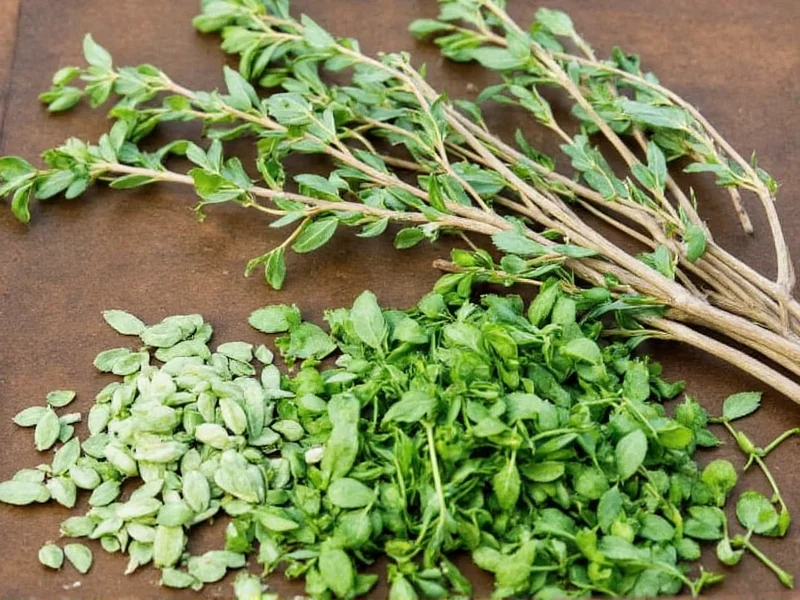Understanding Savory Herb and Its Versatile Applications
Savory herb has earned its place as a kitchen staple across European and Mediterranean cuisines for centuries. Both summer and winter varieties deliver distinctive peppery, thyme-like flavors with subtle pine notes that transform ordinary dishes into culinary delights. Unlike many herbs that lose potency when cooked, savory maintains its robust flavor profile through extended cooking times, making it particularly valuable for slow-simmered recipes.
Culinary Uses for Savory Herb
Chefs and home cooks prize savory herb for its ability to enhance specific food categories without overpowering other ingredients. The herb's natural compounds interact with proteins and starches in ways that improve overall flavor balance in various dishes.
Perfect Partner for Beans and Legumes
One of savory herb's most celebrated culinary uses involves bean preparation. Adding fresh or dried savory to bean dishes serves multiple purposes:
- Reduces gas-producing compounds in legumes by up to 30% according to culinary studies
- Enhances the natural earthy flavors of beans without masking their distinctive character
- Works particularly well with borlotti, cannellini, and navy beans
- Complements traditional bean dishes like French cassoulet and German baked beans
For best results, add one tablespoon of fresh chopped savory or one teaspoon of dried herb per pound of beans during the last 15 minutes of cooking.
Meat Seasoning Applications
Savory herb's antimicrobial properties make it an excellent choice for meat preparation. When used in marinades or rubs, it helps tenderize proteins while adding complex flavor notes. Specific applications include:
- Poultry seasoning: Combine with sage, thyme, and rosemary for roast chicken
- Lamb rubs: Mix with garlic, olive oil, and lemon zest before grilling
- Game meat preparation: Counteracts strong flavors in venison and rabbit
- Breakfast sausage blends: Adds depth to pork and turkey sausage recipes
| Meat Type | Recommended Savory Form | Usage Tip |
|---|---|---|
| Poultry | Fresh leaves | Stuff cavity with herb sprigs before roasting |
| Lamb | Dried herb | Mix with coarse salt for dry rub application |
| Pork | Infused oil | Use in pan sauces after searing |
| Game | Winter savory | Add to marinade for 4-6 hours before cooking |
Herb Blends and Condiments
Savory herb serves as a foundational component in several classic herb combinations. The herb's moderate intensity allows it to blend seamlessly with other aromatics without dominating the mixture. Popular applications include:
- Herbes de Provence: Contributes peppery notes alongside lavender and thyme
- Fines herbes: Provides depth in the French blend typically featuring chervil, tarragon, and parsley
- Herb vinegars: Infuse white wine vinegar with fresh savory sprigs for salad dressings
- Compound butters: Blend with softened butter, garlic, and lemon zest for steak topping
Medicinal and Traditional Uses
Historically, savory herb has served various therapeutic purposes across European folk medicine traditions. While modern medicine has largely replaced these applications, some traditional uses persist due to anecdotal evidence and preliminary research.
Digestive Support
Savory herb contains carvacrol and thymol, compounds known to stimulate digestive enzyme production. Many cultures traditionally consumed savory tea after meals featuring beans or heavy meats to:
- Reduce bloating and gas formation
- Stimulate bile production for fat digestion
- Relieve mild stomach cramps
To prepare digestive tea, steep one teaspoon of dried savory in eight ounces of boiling water for 5-7 minutes before consumption.
Topical Applications
Winter savory, in particular, has stronger antimicrobial properties that make it suitable for external applications. Traditional preparations include:
- Mouth rinses for sore throats (1:10 herb to water ratio)
- Compresses for minor skin irritations
- Infused oils for muscle aches and joint discomfort
Gardening and Companion Planting Benefits
Beyond the kitchen, savory herb offers significant advantages in garden ecosystems. Its natural properties make it valuable for organic gardening practices.
Natural Pest Deterrent
The strong aroma of savory herb repels several common garden pests while attracting beneficial insects. Strategic planting provides these benefits:
- Plant near bean rows to deter Mexican bean beetles
- Position around cabbage family plants to discourage aphids
- Grow as border plants to create natural pest barriers
Soil Health Improvement
Savory's extensive root system helps break up compacted soil while adding organic matter as the plant decomposes. The herb's preference for well-drained soil makes it an excellent indicator plant for gardeners assessing soil conditions.
Preservation Methods for Year-Round Use
To enjoy savory herb's distinctive flavor throughout the year, proper preservation techniques are essential. Different methods yield varying results depending on intended culinary applications.
Drying Techniques
Drying preserves savory's flavor compounds effectively when done correctly:
- Air drying: Bundle stems and hang in dark, well-ventilated space for 1-2 weeks
- Oven drying: Spread leaves on baking sheet at lowest temperature (170°F/75°C) for 2-4 hours
- Dehydrator method: Process at 95°F (35°C) for 4-6 hours until brittle
Store dried savory in airtight containers away from light for up to one year.
Freezing Options
Freezing preserves more volatile flavor compounds than drying:
- Chop fresh herb and freeze in ice cube trays with water or olive oil
- Freeze whole sprigs in vacuum-sealed bags
- Create herb paste with oil for direct use in cooking
Substitutions and Culinary Pairings
When savory herb isn't available, understanding proper substitutions ensures recipe success. The herb's unique flavor profile requires thoughtful replacements based on the dish's requirements.
Effective Substitutes
Depending on whether summer or winter savory is needed, these alternatives work well:
- Summer savory substitute: Equal parts thyme and marjoram
- Winter savory substitute: Oregano with a pinch of rosemary
- For bean dishes: Marjoram provides similar digestive benefits
- For meat rubs: Thyme offers comparable earthy notes
Flavor Pairing Principles
Savory herb complements specific ingredients through flavor chemistry:
- Enhances umami in mushrooms and tomatoes
- Counterbalances bitterness in cruciferous vegetables
- Works particularly well with lemon and garlic
- Complements creamy sauces without overwhelming them











 浙公网安备
33010002000092号
浙公网安备
33010002000092号 浙B2-20120091-4
浙B2-20120091-4